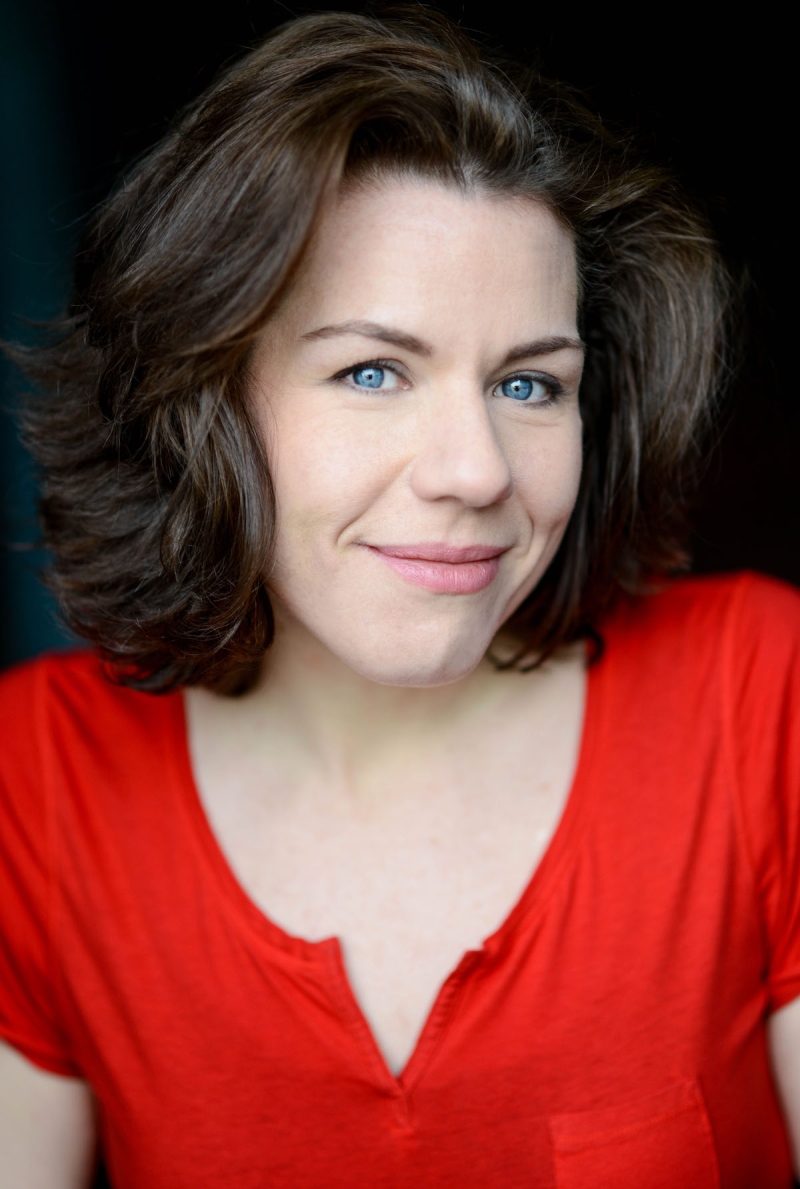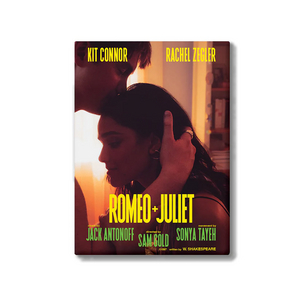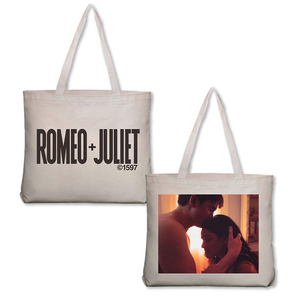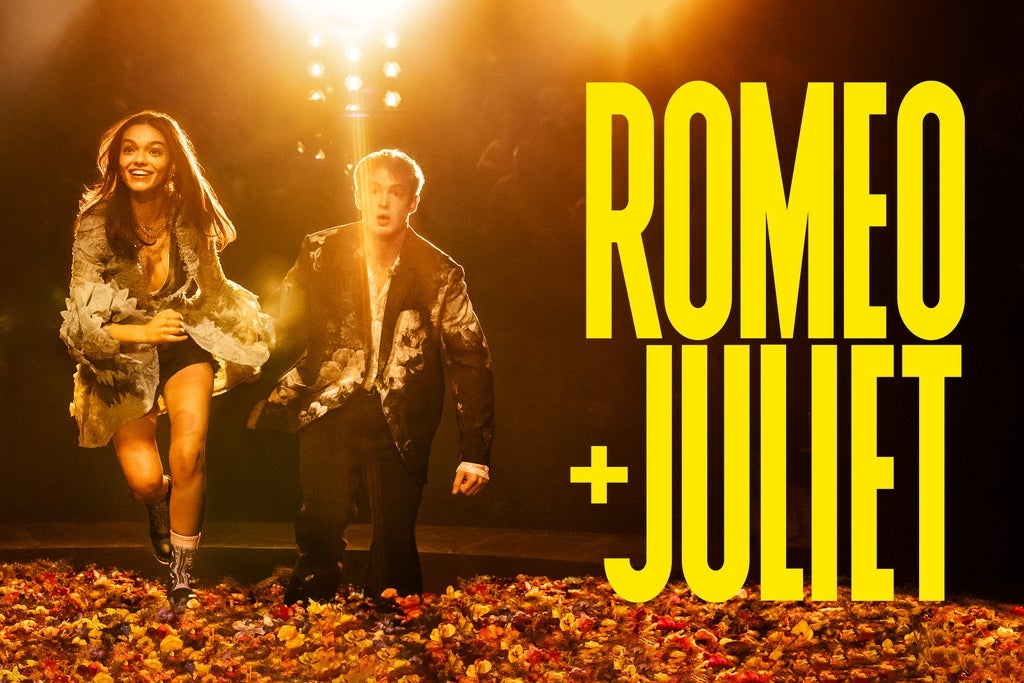Interview: How Intimacy Director Claire Warden Is Crafting Safe Spaces on Stage and Screen
Warden discusses her collaborative approach with directors and actors, the importance of creating a safe environment for performers, and more.
 Intimacy director Claire Warden is transforming how intimacy is approached on stage and screen. With a background in acting and fight direction, Claire understands firsthand the unique challenges performers face in telling stories with their bodies, a perspective that guides her commitment to safety and consent. Her recent work on Broadway's Romeo & Juliet starring Rachel Zegler and Kit Connor, and Starz’s Three Women focuses on creating a collaborative environment where actors feel empowered and respected in the most vulnerable scenes.
Intimacy director Claire Warden is transforming how intimacy is approached on stage and screen. With a background in acting and fight direction, Claire understands firsthand the unique challenges performers face in telling stories with their bodies, a perspective that guides her commitment to safety and consent. Her recent work on Broadway's Romeo & Juliet starring Rachel Zegler and Kit Connor, and Starz’s Three Women focuses on creating a collaborative environment where actors feel empowered and respected in the most vulnerable scenes.
In this interview, Claire shares how her experiences have influenced her approach to intimacy coordination, from setting boundaries to cultivating an atmosphere of trust and creativity. She discusses her methods in Romeo & Juliet, where she prepared the cast for the play’s intense physical closeness, and more.
Read the full interview here!
Your background in acting and fight direction gives you a unique perspective on intimacy direction. How do these disciplines inform your approach to creating safe and supportive environments for performers in intimate scenes?
I think having been an actor for a long time, I deeply understand from the actor’s side. The process of creating a story with your body is a very unique job, there is very little like it out there in the world. I also have a deep understanding of the way that our industry, and the way that the system in which we work in, has been set up to be quite a coercive system. And there isn’t a lot of space in it currently for consent. I know how actors in our training are conditioned out of the word ‘no’, and conditioned out of listening to our bodies in terms of our levels of consent, and the expectations about actors' bodies being available to whoever the person in power wants them to be in whatever way they want.
So, having been on that side, it’s really helpful for me to then know how to shift things in the system in order to set actors up for the most inspiring and healthy ways of working. I also have such a deep love and passion for physical storytelling. And I know that when an actor feels heard, and feels seen, and feels respected, and knows that they have their autonomy and they have consent, I know how much more powerfully they can do their work. And how deeply they can do their work. And how willing they are to take the acceptable risks they are to create this beautiful storytelling.
In terms of the fight direction, fight direction is physical storytelling with extreme human situations, and so both the very specific choreographic skills that I’ve developed for telling stories that look like one thing is happening when it actually isn’t, is a very transferable skill. When words aren’t enough, our bodies speak for us. So, when we get to that point, when we move to violence, or we move to sex, or intimacy, I’m very experienced in how to help people hold those stories, how to find an authenticity and a realism in them without depleting or taking too much from the actor.
.jpg)
Intimacy direction is still really new in the industry. I’m curious, what is the response like from actors having you there?
There’s a range of reactions and a range of responses, both across TV/film work and in theatre work as well. Majority of them is a relief, a gratitude, that there is someone there that is finally paying attention, to understand what they have been going through, and is there to advocate for them.
I think also it can take actors a while to build that trust up again. This is an industry where a lot of people will say that they have an actor’s best interest at heart, or they want them to feel good about something, yet the system is set up to not allow that. It can be hard to then trust someone who you just met who says, “But I really am going to make it different.” Sometimes it can be hard to build up the trust again. So, that’s part of our work, to make that space to earn that trust, and build that, and allow the actors to discover their own autonomy back so they can join us as partners in creating agency for themselves and a sustainable and healthy working environment.
Can you walk me through the preparation process you typically go through before starting a project? And then what it looks like when you’re actually on set or in rehearsals?
It’s quite extensive prep. It’s kind of funny, I think a lot of the lack of understanding around the full scope of an intimacy director’s role is because a lot of the really vital foundations of prep work that we’re doing is not seen by a lot of people. So, in terms of theatre, I’ll begin the conversations with the director and the creatives around their thoughts, their ideas, their visions, their wants, the world of the play they’re creating, the environment in which we’re creating it.
Once I have that idea, and that information from them, I will have one on one conversations with every actor that will be involved in any of the scenes of intimacy, nudity, hyper-exposure. And those are extensive conversations where we talk through how I support them, how I will be working with them, what their particular personal requests and consent levels are, what their boundaries are.
Following that, I’ll be meeting with different production departments depending on the requirements of the scene. I’m almost always talking to our wardrobe team if we have any undressing, if we need any particular modesty garments or barriers, if we have scenes that involve nudity. If there are props involved in the scenes, I’ll be talking with our props people. I’ll be talking with our stage manager to talk through the protocols for the rehearsals when we’re rehearsing these scenes, and how we can close the room, and the notice that we’re gving the actors.
And then once everyone is on the same page, in theory, in our prep, then when we come together in the rehearsal room, then I’m working in a collaboration. I think of it as a triangle between myself, the director, and the actors. And if it’s a piece with dance, for example, then the choreographer is there too. Or, if there is violence and intimacy together, then the fight director is there as well. Or if I’m the fight director, then I’m doing both. So, then we’re collaborating together to really build the scene together as a creative team, we’re building the story we want, encompassing all of the actors’ boundaries in a way that allows them to thrive and do their best work.
Romeo + Juliet is entirely about love, intimacy, violence. How did you approach creating that sense of safety and trust among the cast members, especially with the physical closeness that the play demands?
Our production specifically, we have a lot of work that the ensemble does in terms of not just standard typical physical intimacy, but bodies moving together, and choreography that brings bodies close, and together, and lifting. So, it’s a very close proximity-type play.
We began with conversations with the whole ensemble in order to talk about body autonomy and agency, in order to name and put in place some kind of communication tools of how to name boundaries that you might have for a particular section, with particular people, on a particular day. How to address something if someone does cross a boundary, either knowingly, or without knowing. How to receive that information. How to receive someone being like, “Hey, no, don’t do that,” or “I didn’t like that,” or “Hang on, stop, I need to change this." How to receive that with generosity and support, and how to build a room that accepts needs and boundaries and requests as part of the creative process, and with respect, enthusiasm, and love, honestly.
And then we started with a fair amount of laying down physical vocabulary in our movement work with Sonya Tayeh our incredible movement person, with Drew Leary our fight person, some kind of physical violence vocabulary, to start to, in practice, build up that communication and collaboration so that by the time we were getting to scenes and putting in specific intimacy, they were really solid in that foundation.

You also worked on Three Women. How is the process different, or is it, working for something that’s on screen versus something that’s on stage?
It’s hugely different, actually. There are a couple of really big differences. One is that in the theatre we are building a choreography in a way that has to be exactly repeatable, and sustainable eight times a week for months, and so it tells the very specific same story every time. And that story reads, and especially with something like Romeo + Juliet, from in the round, from every single side in a whole massive theatre. Whereas when we’re working on camera, once we film that particular scene we never go back to that again, it never has to be repeated, we’ve done it and moved on.
We also have much more control of the audience’s eye. We can put the camera wherever we need it to be. So, we have more control over where the audience might be looking. And then another major difference is just the way that the schedule works. Three Women took us 10 months to film, so we’re filming over an incredibly long period of time, but we’re doing a different thing every single time we arrive on set. That day we may be shooting six scenes, maybe two of them you have intimacy in, and that’s it. We never go back to them ever again, we’ve done it, we move on.
In a theatre, depending on where you’re sitting, you’re anywhere from five feet to 80 feet away from the actors who are doing their thing real, live, in front of them. For film, for camera, it is so much closer, and then with our zooms, we can get so much closer to the body. So, it’s much more exposed, it’s much more detailed work to tell a story, whereas in a theatre, you have to make sure that the story you’re telling can be seen by everybody, all the way back to the mezzanine. The scale is a very different one.
Do you have any final thoughts you’d like to share?
I think I am continually thrilled by the depth, and the nuance, and the authenticity that we can bring to stories, to shows, when we take that step of really prioritizing the humanity and the agency of our actors. And it’s a relatively small amount of shifts that we make in a process for such a massive effect. I hope that when people go and see Romeo + Juliet, or when they watch Three Women, that they may not be able to identify it, but there is the impact of that process on the visceral experience we get from watching these actors.
Romeo + Juliet, we have people gasping, and crying, and squealing, and screaming, and on their feet, and clapping throughout it, and I think it’s because the actors are so available to them as audience, and so connected to each other and what they’re doing that we get that on a body level, on a visceral, molecular level. Like our molecules are vibrating with theirs, because they’ve been able to find a container that then allows them to be so much deeper and so much freer.



 Romeo And Juliet Logo Magnet
Romeo And Juliet Logo Magnet Romeo And Juliet Pin Set
Romeo And Juliet Pin Set Romeo And Juliet Logo Tote
Romeo And Juliet Logo Tote Romeo And Juliet Logo Pin
Romeo And Juliet Logo Pin
